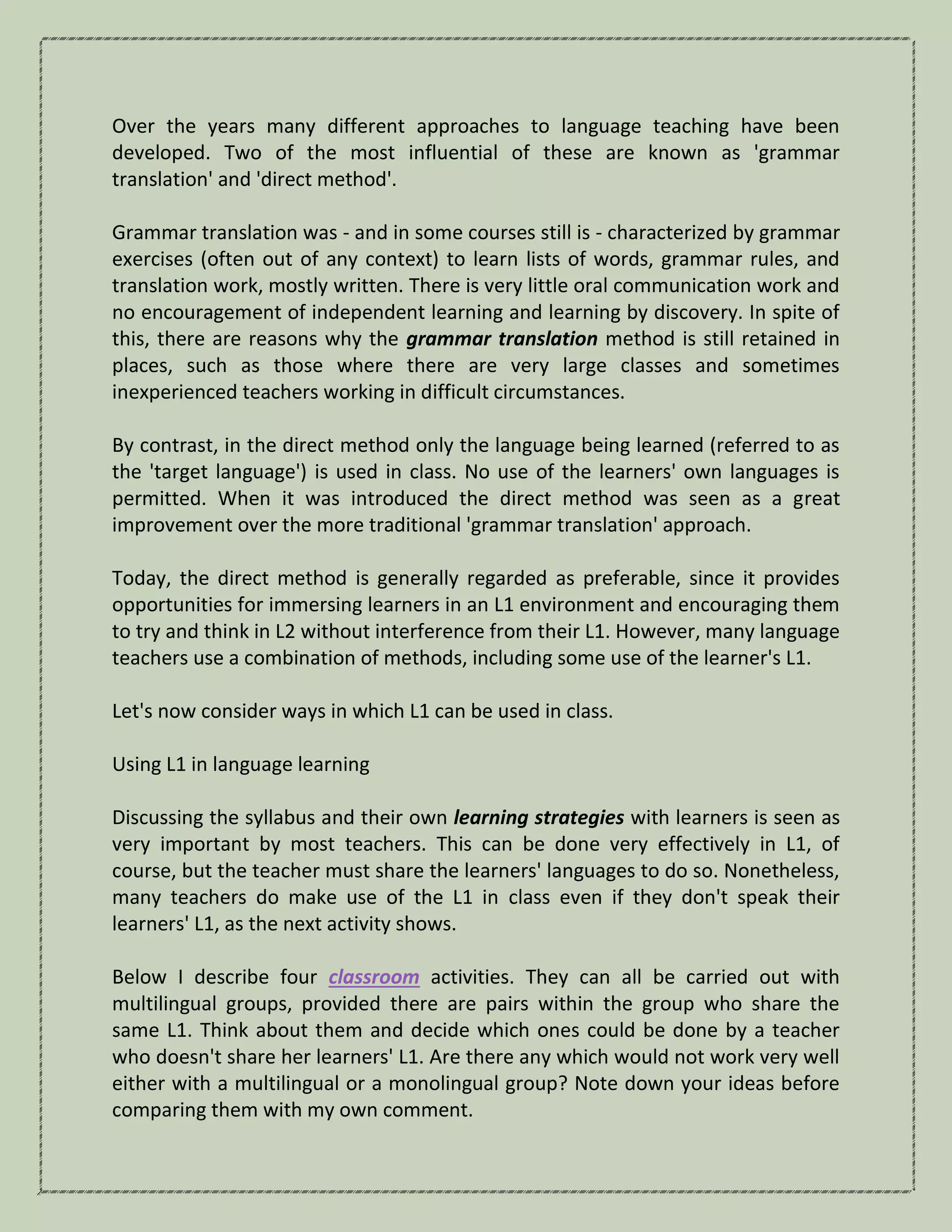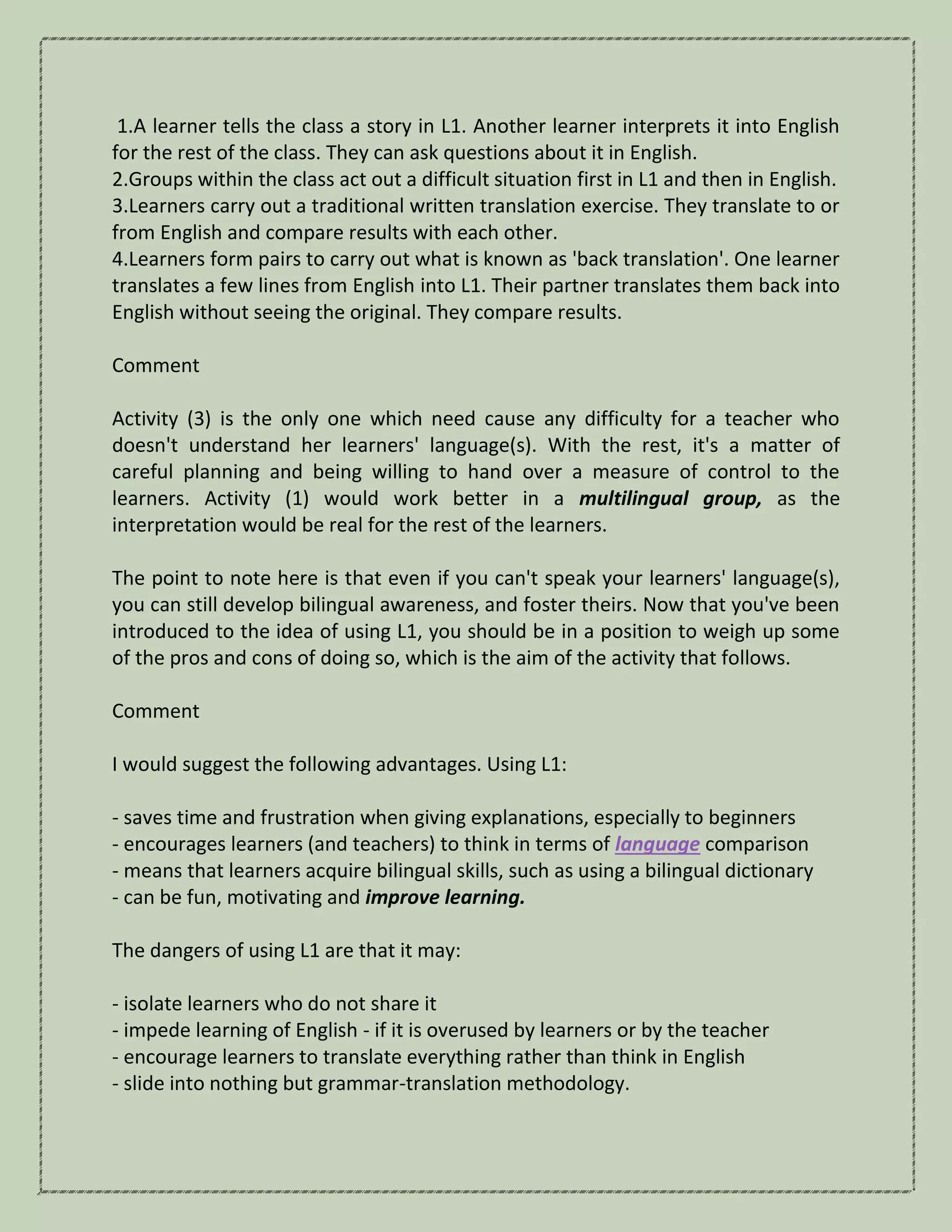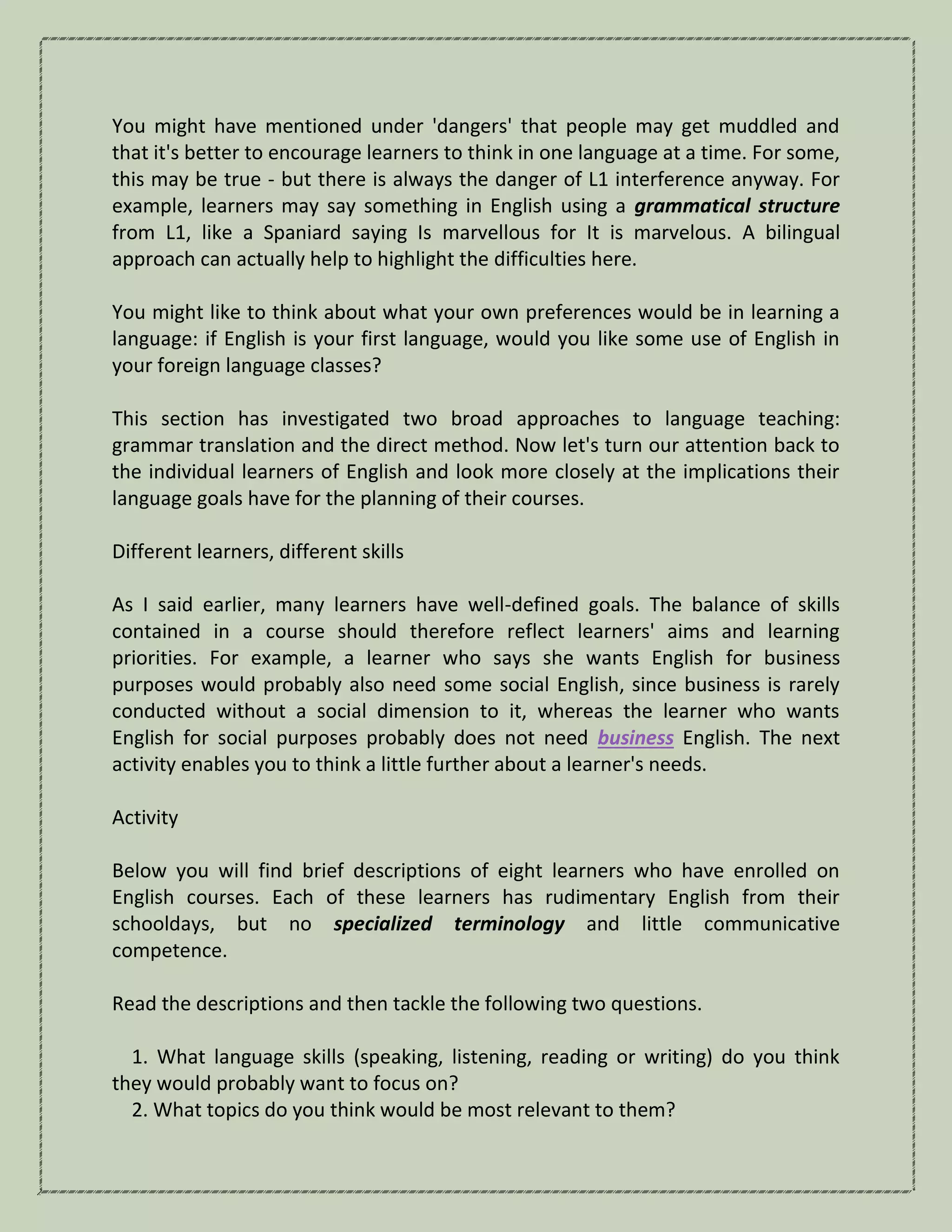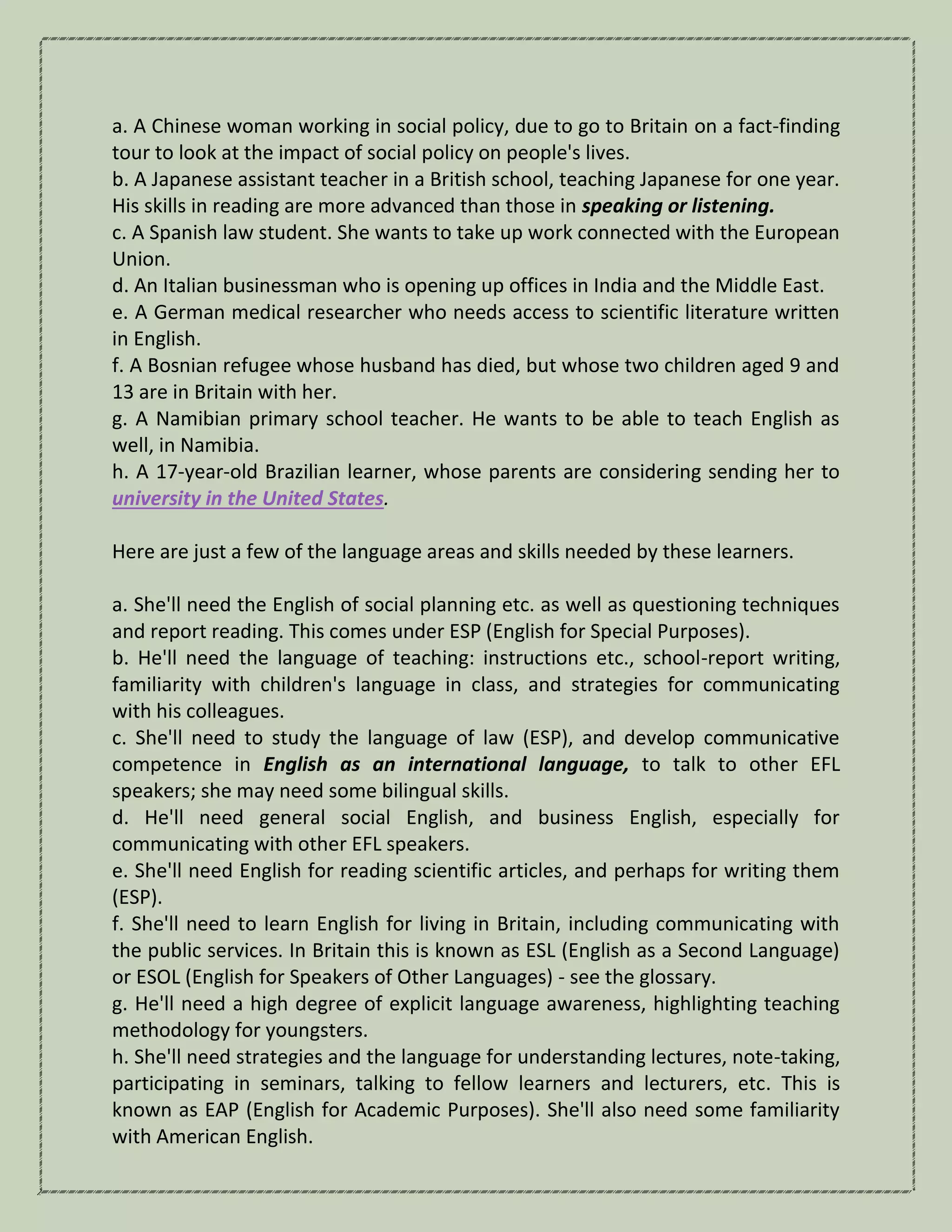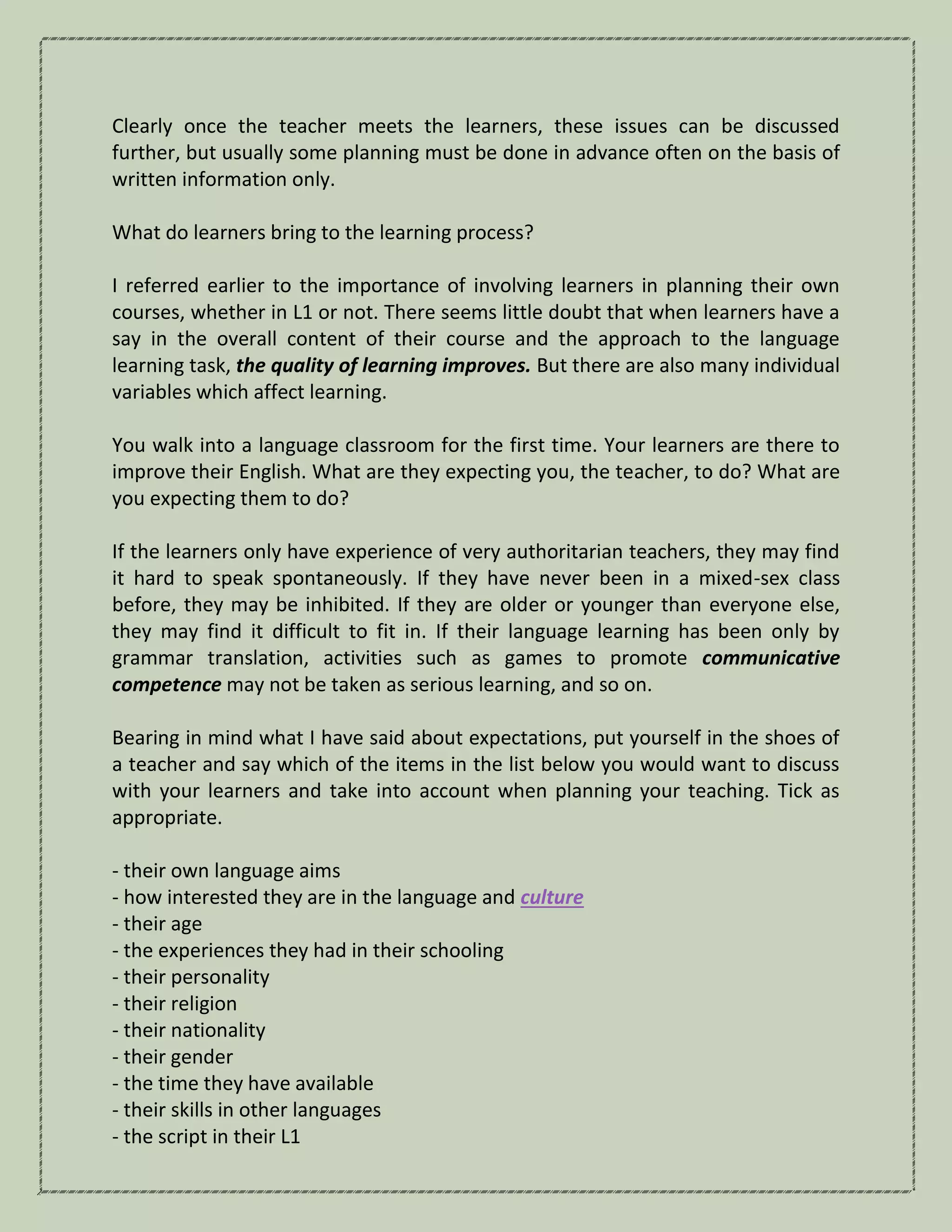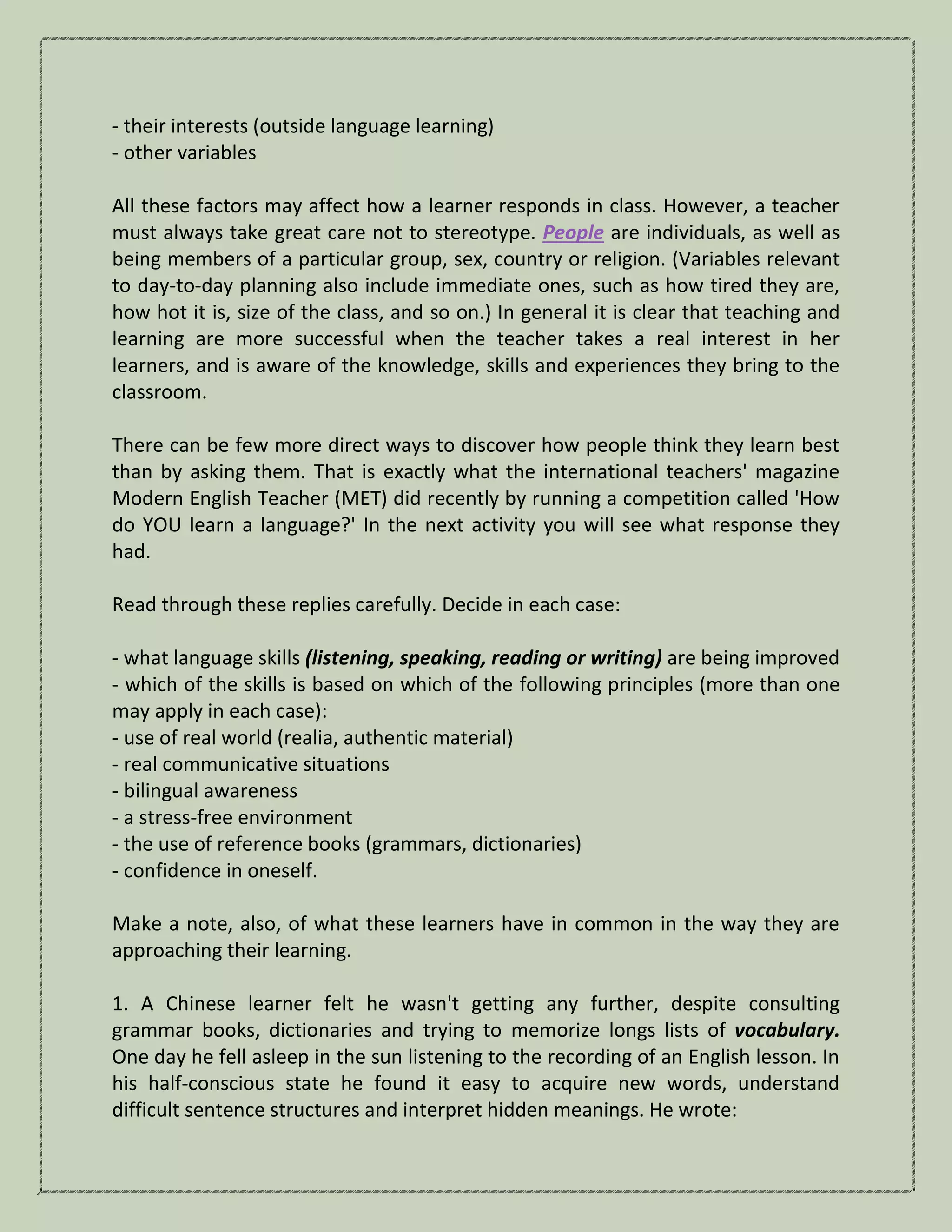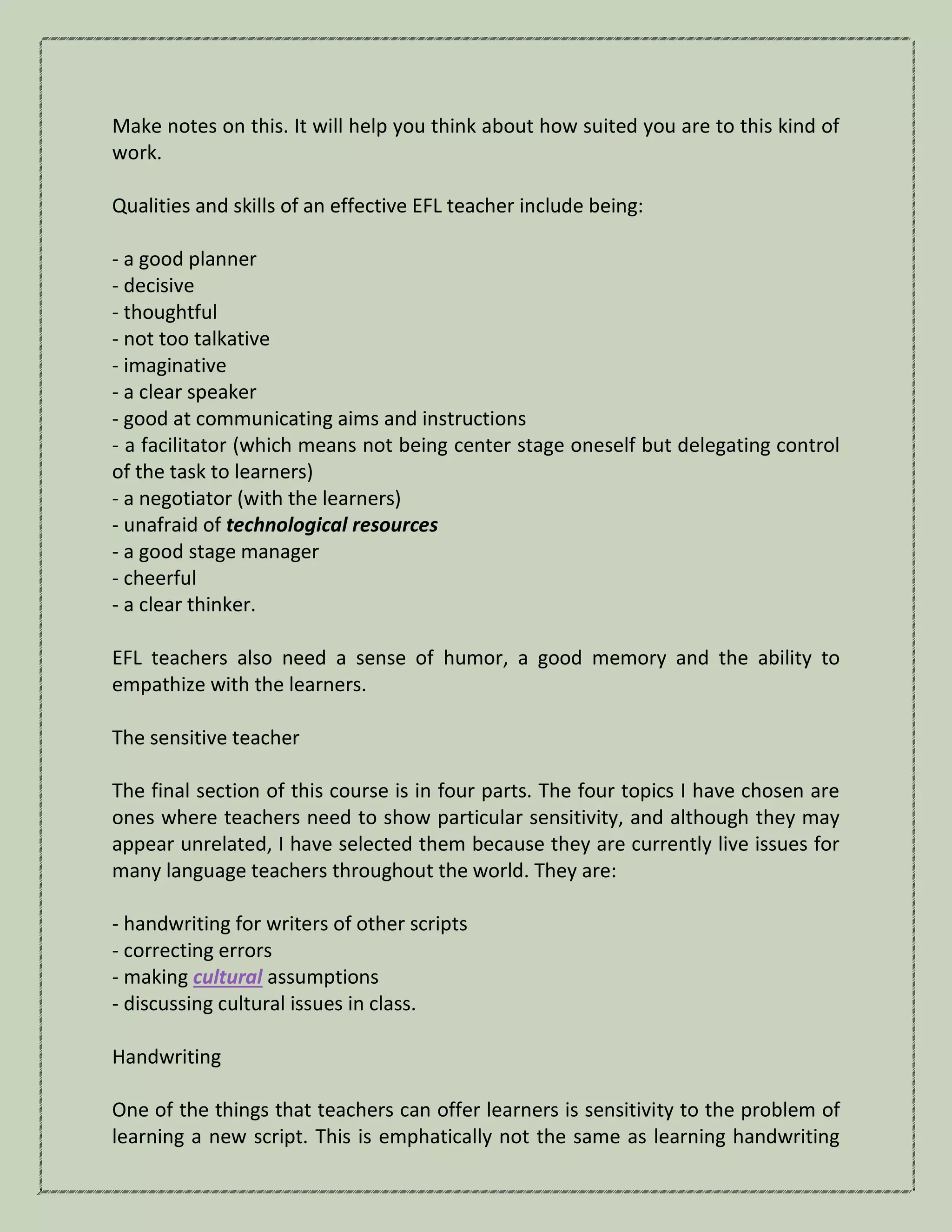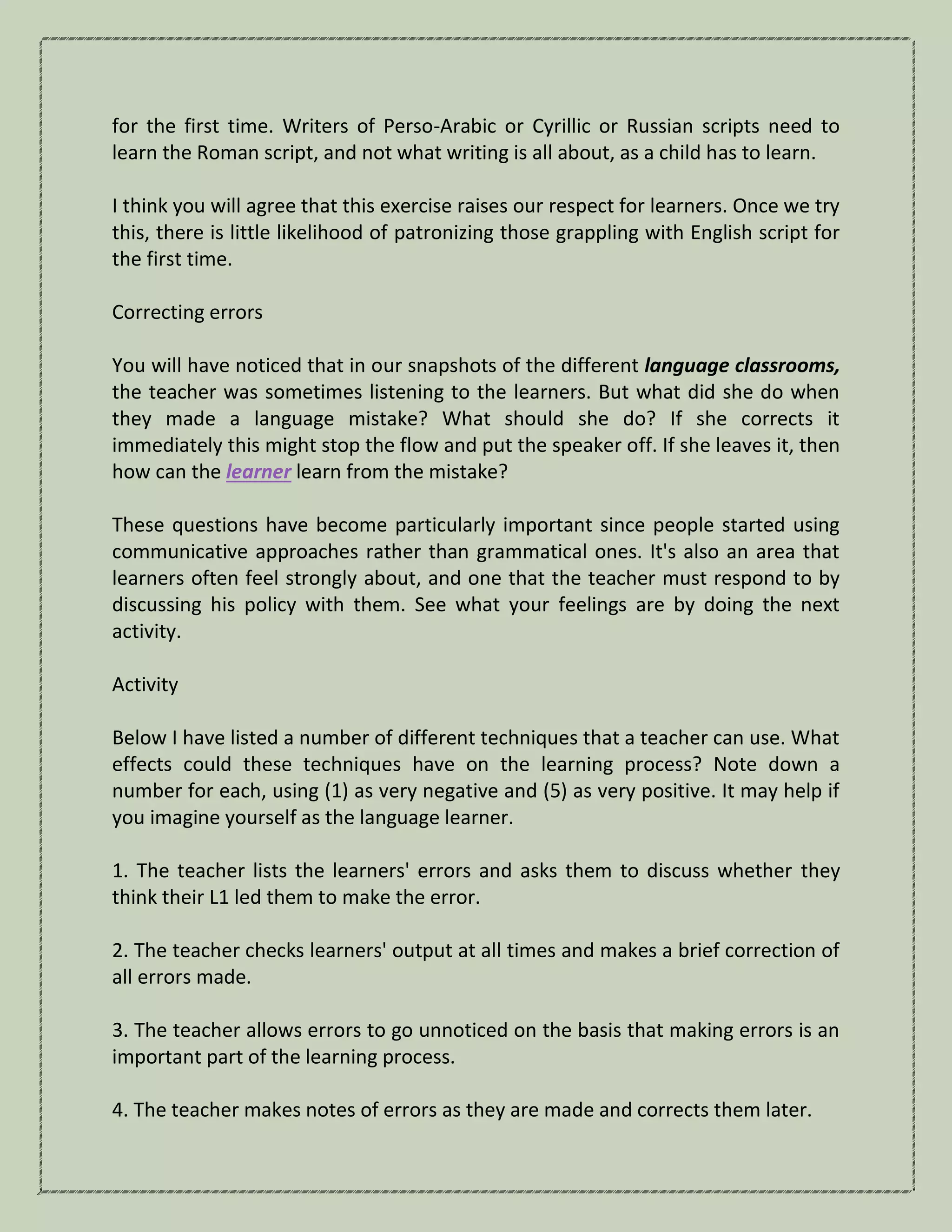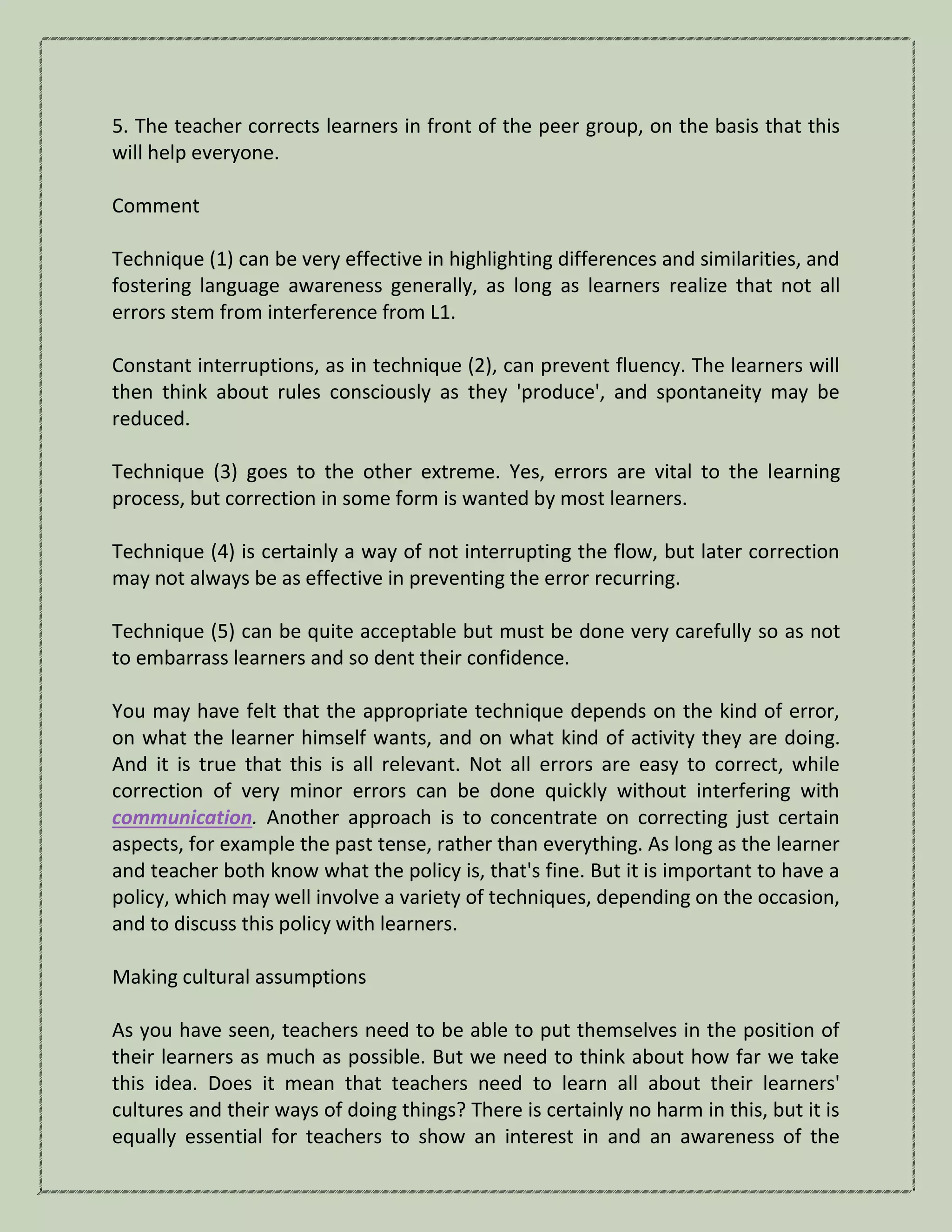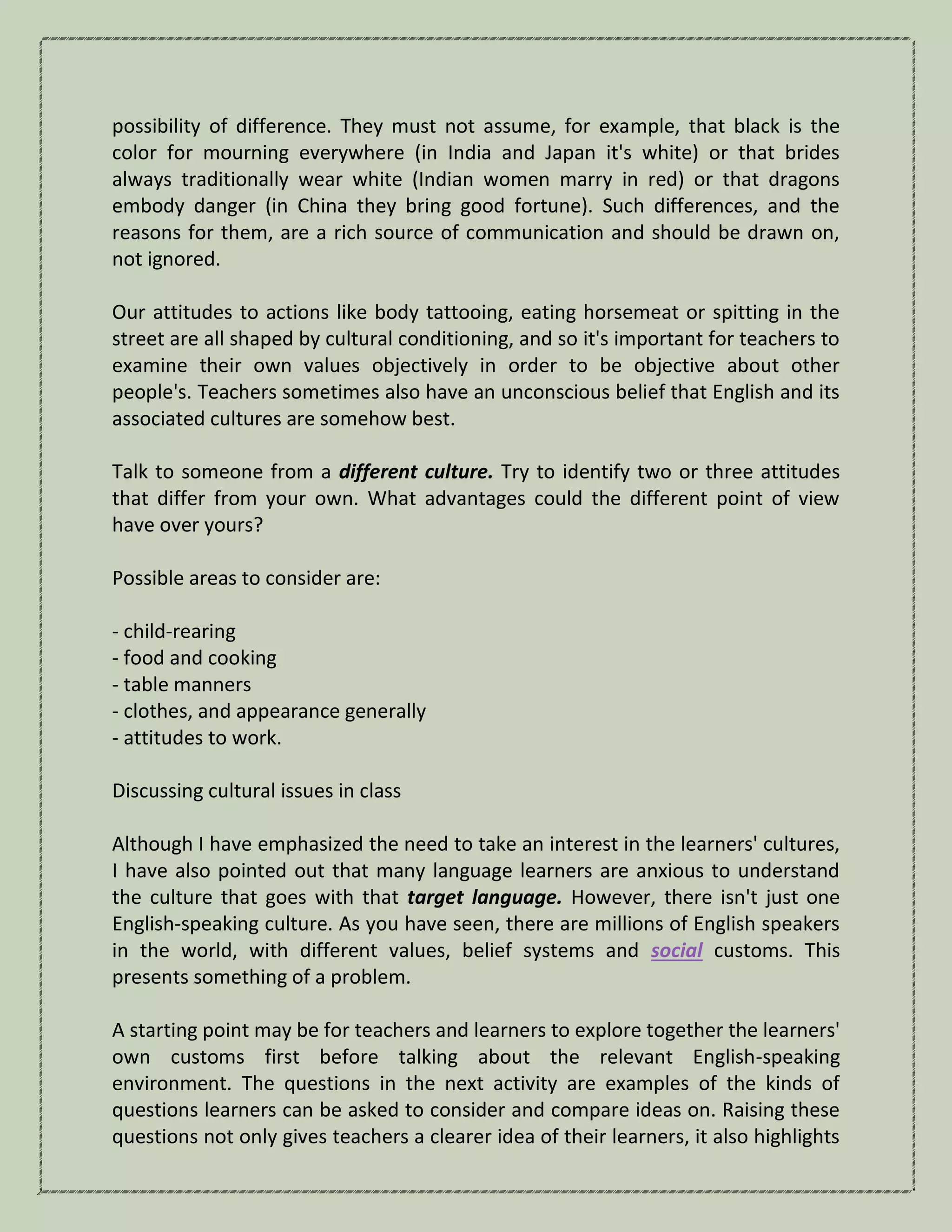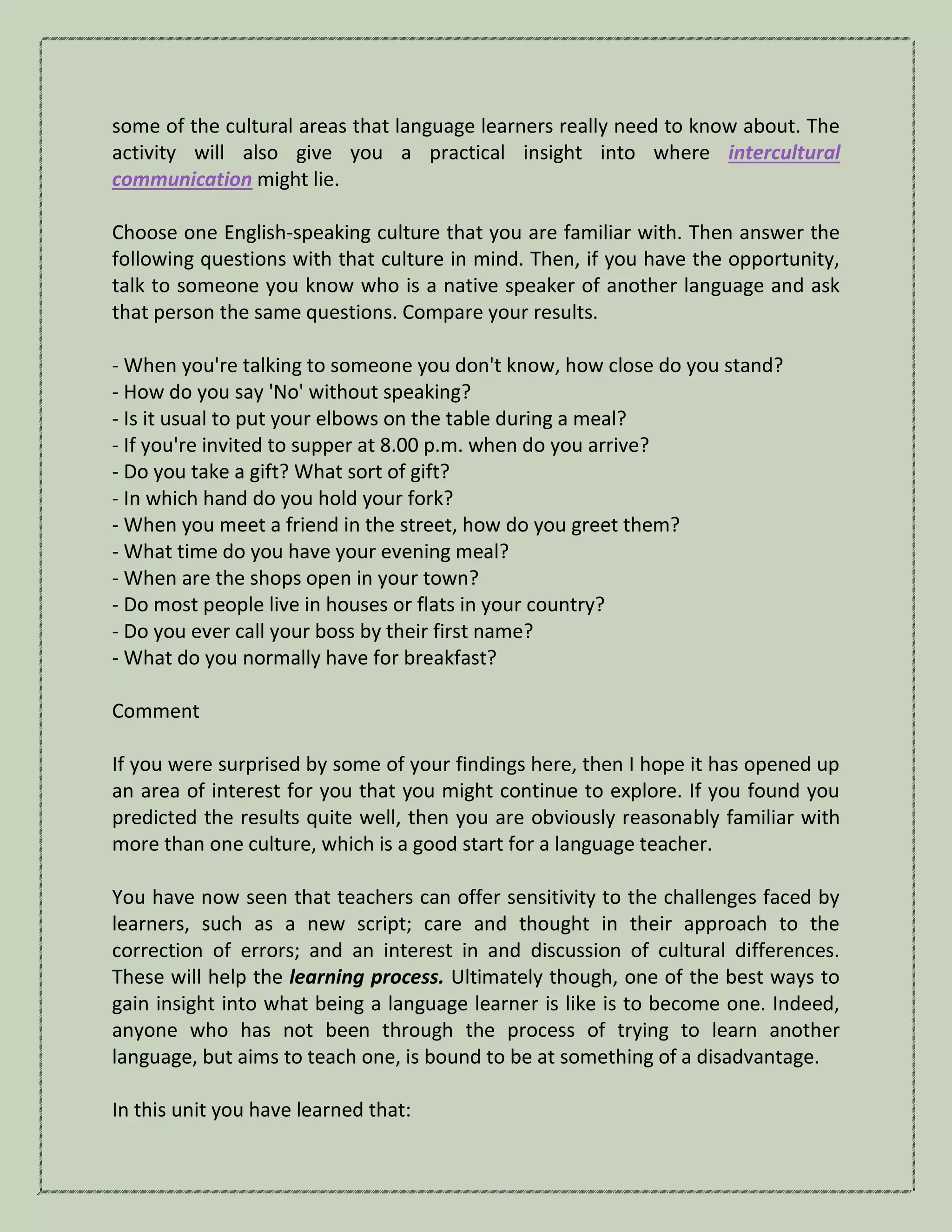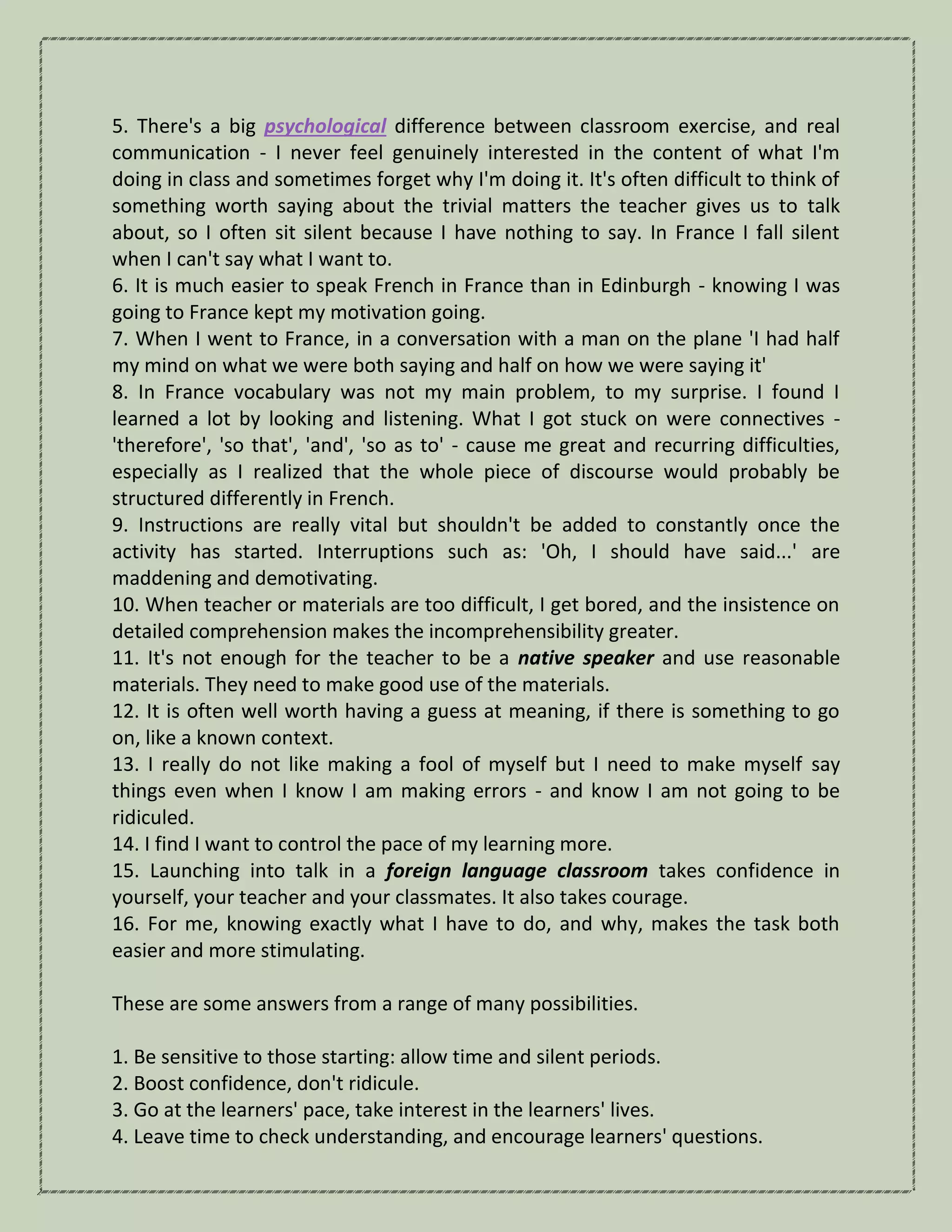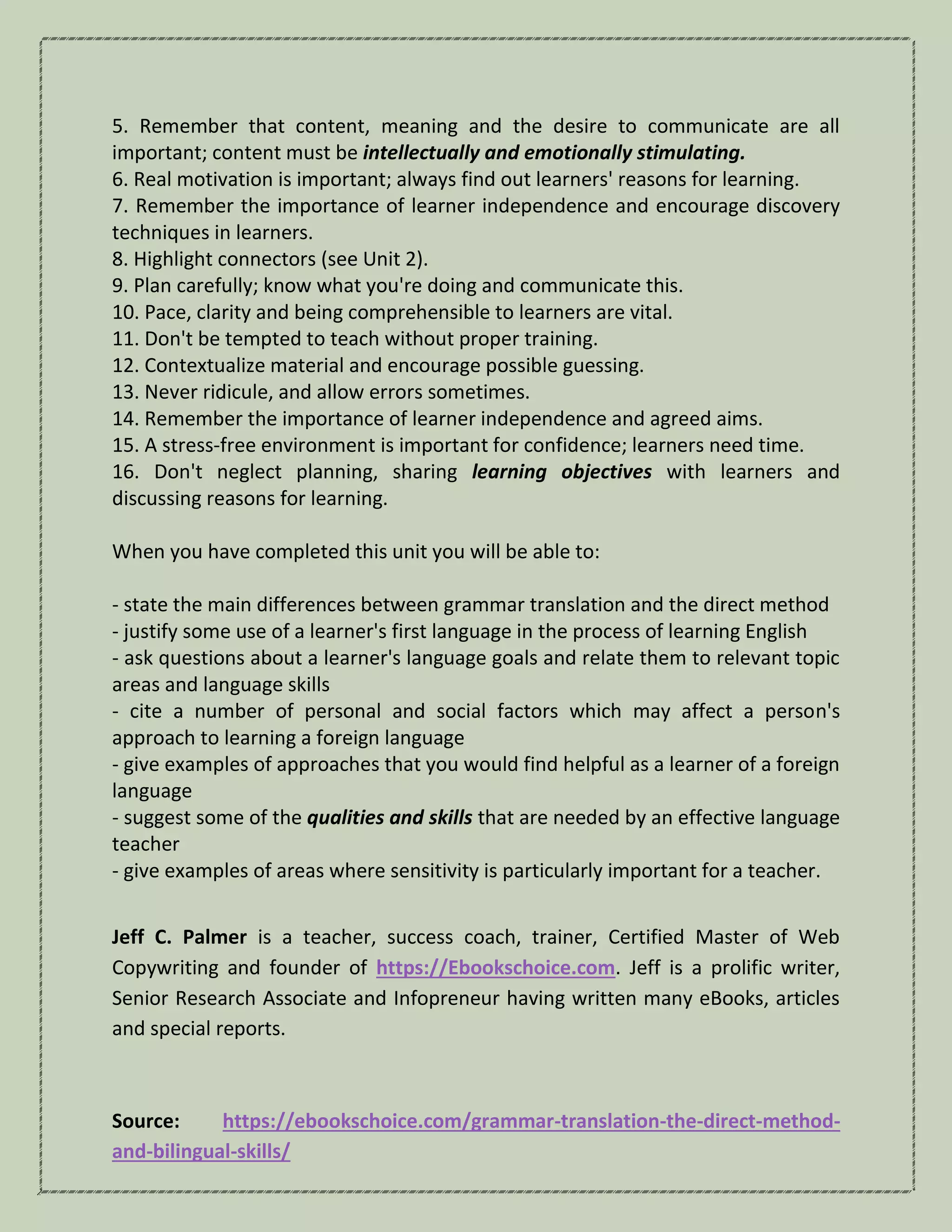The document discusses various approaches to language teaching, emphasizing the diversity in learners' goals and skills in English education. It contrasts traditional methods like grammar translation with more immersive techniques such as the direct method, while acknowledging the complexities of bilingualism and the role of learners' native languages in the classroom. Additionally, it stresses the importance of tailoring courses to individual learners' needs and the essential qualities of effective English language teachers.


